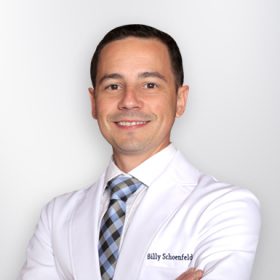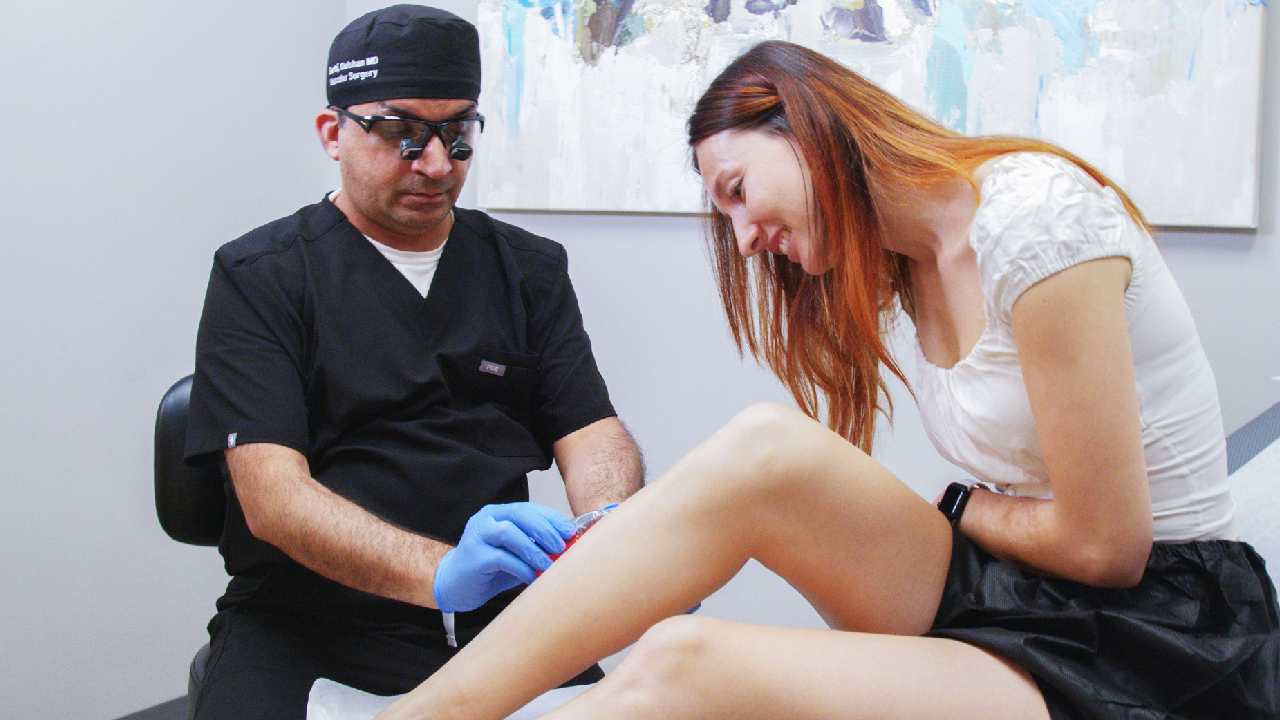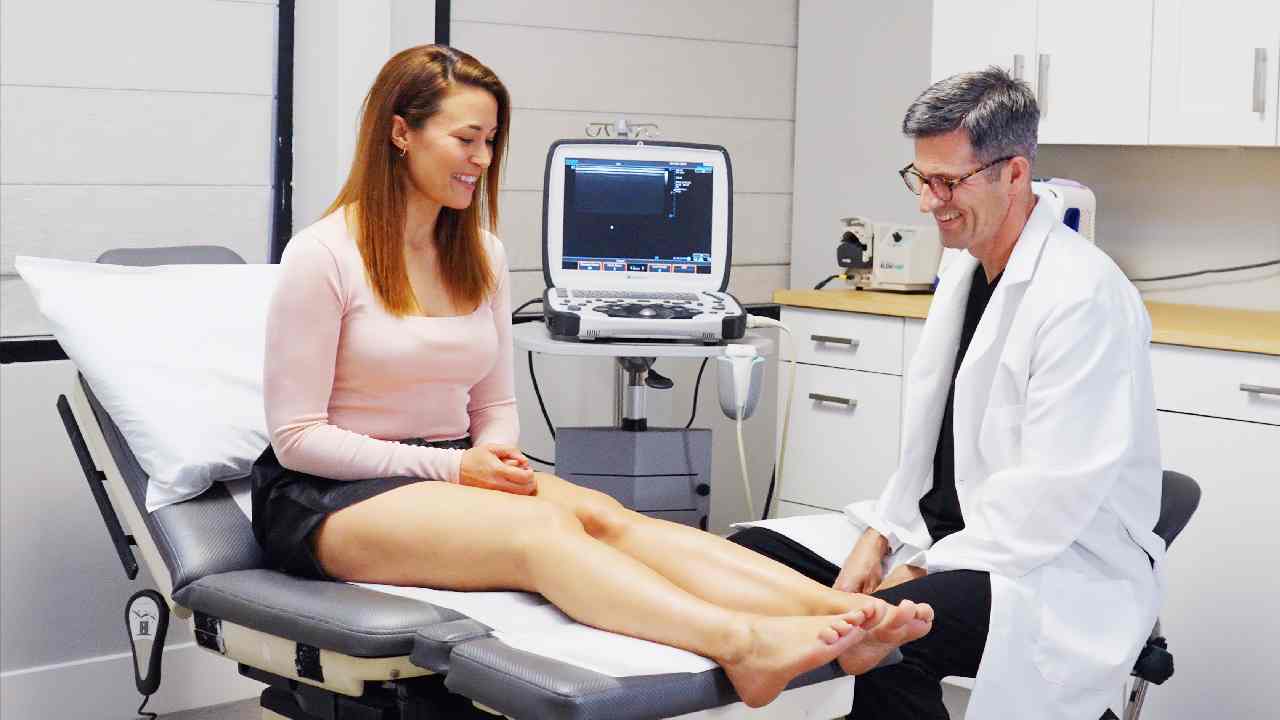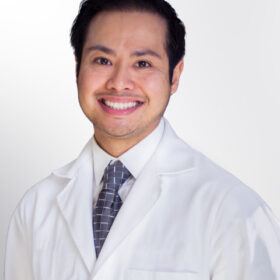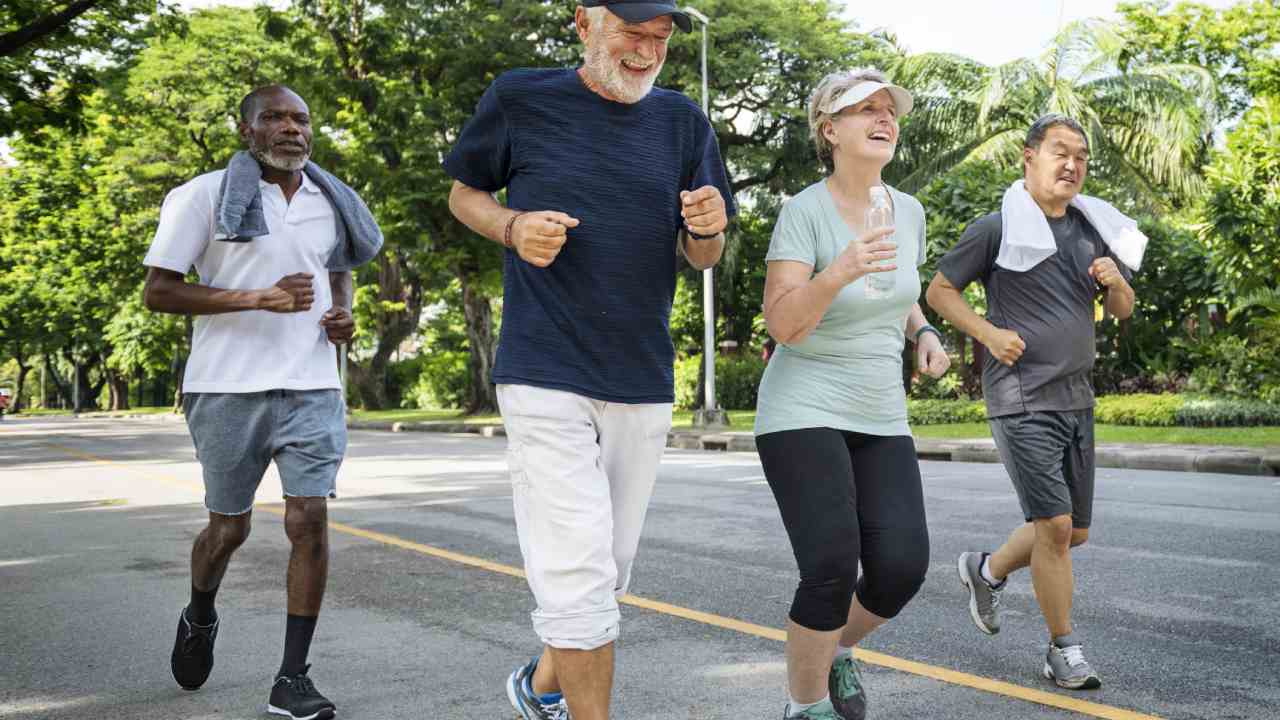
Top Spider Vein Treatments: Pros and Cons
If you have visible blue veins on your legs, puffy veins on your legs, or visible veins on your thighs, you might be experiencing spider veins. Most people are familiar with spider veins — dense clusters of blood vessels visible on the skin’s surface. However, there’s a popular misconception that these puffy veins in your legs aren’t dangerous when, in actuality, they’re often an indication of underlying vein disease.
Sure, in some cases, spider veins aren’t medically dangerous, though one might argue they still pose mental health risks, leading to severe self-consciousness and social anxiety. However, spider veins often indicate that one of your deeper saphenous veins isn’t working properly. An insufficient vein can’t carry blood effectively towards the heart, leading to the accumulation of blood in your leg veins, which, in turn, leads to spider veins y varicosas.
A good vein doctor must always start your spider vein treatment with a thorough examination and diagnosis to determine the true root cause of your spider veins. The treatment plan for spider veins with underlying enfermedad vascular is usually entirely different from the treatment plan for spider veins without underlying vein disease. This article summarizes the top spider vein treatment options (with and without vein disease) and their pros and cons.
Are you interested in getting more information about your condition or getting a treatment?
Fill the form below to start!
Top Spider Vein Treatments with Underlying Vein Disease
Radiofrequency (RF) Ablation
Radiofrequency (RF) ablation is undoubtedly the best vein treatment for patients with underlying vein disease. During the radiofrequency ablation, your vein doctor will administer local anesthesia to numb your skin and create an incision on the surface. The vein doctor will insert a tiny device called a catheter through the incision and into the unhealthy saphenous vein responsible for the spider veins — this will be done under ultrasound guidance. Once inside, the vein doctor will surround the diseased vein with a protective fluid and then deliver sound waves to heat the vein’s walls. The diseased vein will eventually collapse, and the accumulated blood will reroute to healthier veins, restoring smooth blood circulation to the heart.
Radiofrequency ablation is widely considered the best treatment for spider veins and varicose veins because it has a nearly flawless track record, it concludes in 15 to 20 minutes, causes little to no pain and discomfort, has a negligible risk of complications, and there’s no downtime. Furthermore, radiofrequency ablation is also covered by most insurance plans because it’s a medically necessary procedure. Radiofrequency ablation is truly a flawless system.
Endovenous Laser Ablation (EVLT)
In most ways, endovenous laser ablation (EVLT) is similar to radiofrequency ablation. Like RF ablation, it involves a tiny incision through which the vein specialist inserts a small device into the diseased vein under ultrasound guidance. And just like RF ablation, it heats the unhealthy vein to eventually collapse its vein walls, rerouting the accumulated blood to healthier veins. However, there’s only one significant difference between the two procedures — the method of heat generation. Endovenous laser ablation heats the diseased vein with laser energy, which is a lot hotter than the heat generated by radiofrequency waves.
Consequently, endovenous laser ablation also causes a little more post-procedural discomfort than radiofrequency ablation. Once the anesthesia wears off, patients often report pain and discomfort, which can be attributed to the use of laser energy. However, other than one slight drawback, endovenous laser ablation is just as effective as RF ablation. It has a nearly perfect track record, negligible risk of complications, and it concludes within an hour with no extended downtime. EVLT is also covered by most insurance plans.
VenaSeal
VenaSeal is a medical-grade adhesive or vein glue that’s recently received FDA approval to treat venous insufficiency. During the VenaSeal procedure, the vein doctor carefully injects the vein glue into the diseased saphenous vein. The diseased vein’s walls fuse, and the accumulated blood reroutes to healthier veins.
VenaSeal is a painless and comfortable procedure with an incredible success rate. It doesn’t even involve an incision — an injection is enough. However, it’s a relatively new procedure, so its long-term effects aren’t yet conclusive. And it’s not yet covered by some insurance plans, making it inaccessible to some patients.
ClariVein (Chemical Ablation)
ClariVein is a cutting-edge device used for chemical ablation of the diseased saphenous vein. This device features a 360-degree rotating tip that delivers a specially concocted vein fusion solution into the diseased vein’s walls without laser or thermal energy. Once the diseased vein is fused or closed, the accumulated blood reroutes to healthier veins.
ClariVein is particularly suitable for twisted, knotted, or tangled veins. It’s a painless and comfortable procedure with minimal side effects, a negligible risk of complications, and no downtime. However, ClariVein is also more time-consuming than the other ablation methods, and some insurance plans do not cover it. A good vein doctor will carefully examine your saphenous veins to determine if you can truly benefit from ClariVein.
Escleroterapia
Sclerotherapy with Varithena is also known as “Foam Escleroterapia” because it relies on using a pre-mixed foam solution to close the diseased saphenous vein. During the Varithena process, the vein doctor injects a premixed foam solution with a special nitrogen infusion into the diseased saphenous vein and spider veins. The foam solution closes the diseased veins, and the nitrogen infusion catalyzes the process to make it more efficient.
Sclerotherapy with Varithena effectively treats spider veins, varicose veins, and the underlying venous insufficiency. It’s a non-surgical and minimally-invasive treatment that causes little to no discomfort and has a negligible risk of complications. It’s also faster and more effective than most other treatments, and there’s no recovery period.
Laser for Spider Veins
Laser for spider veins is generally only suitable for spider veins on the face and feet. During this procedure, the vein doctor directs laser light at the spider veins to make them shrink and eventually get absorbed by the body. You may need multiple sessions to see the results.
Laser for spider veins is often offered by medical spas because it doesn’t have to be administered by licensed vein doctors. It’s extremely ineffective and has a high risk of recurrence, which is why most reputable vein doctors avoid this treatment. However, it’s a suitable treatment for spider veins on the face and feet.
Spider Veins FAQs
Do you get spider veins during pregnancy?
Yes, pregnancy is one of the risk factors for varicose veins and spider veins. When you’re pregnant, the weight of the fetus in the uterus applies pressure on the veins, increasing the risk of blood accumulation in the leg veins. Pregnancy also leads to significant hormonal changes in the body that may weaken the vein walls, leading to spider veins.
Does crossing your legs give you spider veins?
No, crossing your legs doesn’t give you spider veins. However, you may increase your risk of spider veins if you spend considerable hours per day sitting still, with or without crossed legs.
Can I eat ginkgo biloba for spider veins?
No, you cannot treat spider veins with ginkgo biloba, witch hazel, apple cider vinegar, or any other herbal home remedies. Spider veins occur due to blood accumulation in your leg veins, and the only way to treat them is through medical intervention. Home remedies for spider veins are often based on pseudoscience with no scientific research.
Will I experience pain after sclerotherapy?
You may experience mild bruising and swelling after sclerotherapy for a few days or weeks. You must wear medical grade compression stockings and walk frequently to ensure smooth blood circulation and aid the recovery process.
How to not get spider veins?
There are no absolute means of avoiding spider veins, but you can take certain measures to minimize the risk of blood accumulation in your leg veins. You can wear medias de compresión., walk frequently, and engage in exercises that work your calf muscles (running, swimming, yoga). These simple lifestyle changes can minimize the likelihood of spider veins.
Choosing the Best Spider Vein Treatment
If you have visible blue veins on legs, puffy veins in legs, veins in butt and thighs, or other symptoms of vein disease, please reach out to board-certified vein doctors to discuss your spider vein treatment options.
Our state-of-the-art vein clinics are populated by exceptionally talented, friendly, and Ivy League-educated vein doctors who carefully diagnose the root cause of your leg veins to curate the ideal treatment plan. Our vein clinics are located in New York, New Jersey, and California — please select your nearest vein center and schedule an appointment today.
FEATURED POSTS BY VEIN DOCTORS










